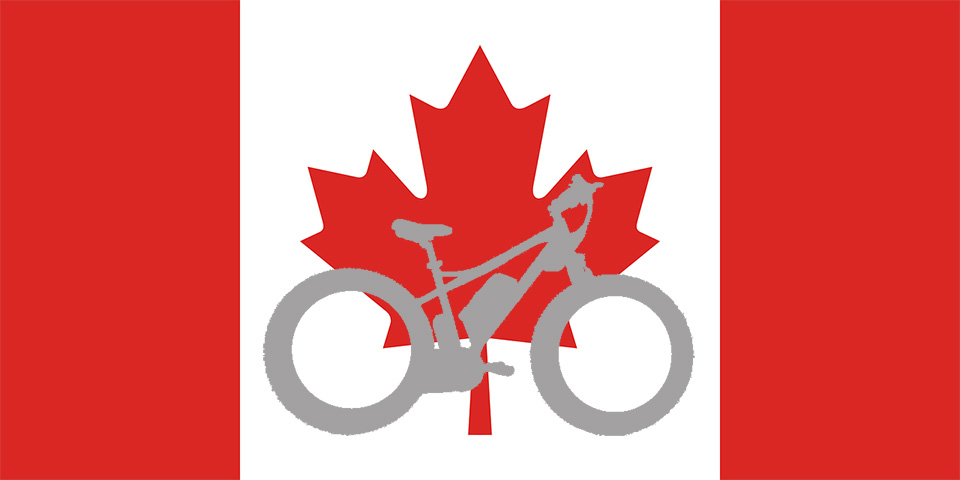
What are the Ebike Laws in Canada?
Global concerns about climate change have some people moving away from greenhouse gas-producing motor vehicles and toward more environmentally friendly modes of transportation. One increasingly popular option is electric bicycles, or ebikes.
Ebikes ride the same way regular bicycles do, except they have an electric motor that assists the rider while pedalling. Across Canada, most of the same rules for bicycles apply to ebikes. However, there are some differences in ebike laws, which need to be kept in mind.
Most of the ebike laws are based on Canada’s Motor Vehicle Safety Regulations definition of a power-assisted bicycle as a vehicle that:
- has steering handlebars and pedals;
- is designed to travel on three or fewer wheels;
- can be propelled by muscular power;
- has one or more electric motors that have, singly or in combination, the following characteristics:
- the motor(s) has a total continuous power output rating of 500 W or less when measured at the shaft of each motor;
- if the motor is engaged by the use of muscular power (pedalling), power assistance immediately stops when the rider stops pedalling;
- if the motor is engaged by the use of an accelerator controller, power assistance immediately stops when the rider applies the brakes; and
- the motor is unable to provide assistance when the ebike reaches 32 km/h on level ground;
- has a bilingual (English and French) label that is permanently affixed by the manufacturer in a conspicuous location stating that the vehicle is a power-assisted bicycle as defined in this subsection, and
- has one of the following safety features:
- a mechanism to turn the electric motor on and off that is separate from the accelerator controller and placed where the driver can operate it; or
- a mechanism that prevents the motor from being engaged before the ebike reaches 3 km/h.
As well as the Canadian ebike laws, each province and territory has its own rules and regulations. Ebikes must follow the federal and provincial or territorial ebike laws in the jurisdiction they are being ridden. There may also be municipal ebike laws or bylaws.
NOTE: While we have made every effort to ensure the accuracy of the information here, we have provided links as the information is subject to change. Some of the ebike laws mentioned here were updated as recently as 2018 and 2019. Please check local provincial or territorial legislation and municipalities to ensure you are riding legally and safely. Ebikes-Canada.com is not responsible for any errors, ommissions or changes. We will update this page as we become aware of new developments in ebike laws.
Provincial and territorial ebike laws
- British Columbia
- Alberta
- Saskatchewan
- Manitoba
- Ontario
- Quebec
- New Brunswick
- Nova Scotia
- Prince Edward Island
- Newfoundland and Labrador
- Yukon
- Northwest Territories
- Nunavut
British Columbia
British Columbia’s Motor Assisted Cycle Regulation requires the wheels of ebikes to be at least 350 mm in diameter and that brakes need to be on each wheel or axle. The brakes must be able to top the ebike, travelling at 30 km/hr, to a full stop within 9 m from where the brakes were applied.
The B.C. regulation also specifies that a combustion engine cannot power the motor. All motor and battery components must be secured, so they won’t move while the ebike is used. All electrical terminals must be completely insulated or covered.
Alberta
The Government of Alberta produced the 22-page handbook Rules & Regulations Applying to Small Vehicles with information about the various laws that apply to power bicycles (ebikes), mopeds, motorcycles, mobility aids, and off-highway vehicles.
While Albertans do not need a licence, registration, nor insurance to ride ebikes, they do need to be at least 12 years old and wear either a bicycle or motorcycle helmet. Minors need written permission from a parent or guardian and those under 16 cannot have passengers. Ebikes need to be equipped with a headlight, tail light, reflectors, brakes and a horn.
Saskatchewan
In Saskatchewan, ebikes fall under recreational vehicles. Ebike riders must be 14 years old or older and must wear a Canadian Standards Association (CSA) approved bicycle or motorcycle helmet. Riders can carry a passenger, who is also wearing a CSA-approved helmet, if the ebike is designed to do so.
However, electric bicycles with motors larger than 500 W or without pedals, as well as gas-powered cycles, are considered motorcycles, which require a motorcycle licence.
Manitoba
Manitoba’s Highway Traffic Act requires riders to be 14 years old or older and wear a properly fitted and fastened helmet.
Ontario
Ontario’s Highway Traffic Act includes Ontario Regulation 369/09 Power-Assisted Bicycles. This ebike laws requires ebikes to not weigh more than 120 kg, and their wheels not be less than 35 mm wide or less than 350 mm in diameter. The battery and motor must be securely fastened to prevent them from moving while the ebike is moving. All electric terminals must be completely insulated and covered. The brakes must be able to stop the ebike—while travelling 30 km/hr on a clean, paved, and level surface—within 9 m from where the brakes were applied.
While the federal ebike laws require that the power assistance to immediately stop when muscular power stops or when you apply the breaks, Ontario also requires the power assistance to stop when the accelerator is released. (No cruise control should be enabled)
Quebec
Quebec’s Highway Safety Code covers power-assisted bicycle. While those 18 years old and older can ride an ebike without a licence, minors need a moped licence. All riders need to wear a helmet.
As well as the federally required labelling, ebikes in Quebec also need a label with the motor’s continuous power output rating and the maximum number of revolutions per minute, as measured at the shaft of the motor. This includes regular bicycles that have been converted to ebikes.
New Brunswick
The only mention of e bikes, electric bicycles, or power-assisted bicycles on the Government of New Brunswick’s website is on its Motor Vehicle Registration page. Ebikes are considered as bicycles and all the requirements placed on bicyclists are applicable.
Nova Scotia
Nova Scotia’s Motor Vehicle Act includes ebikes in their definition of a bicycle. A bicycle can be:
- a human-powered vehicle with two tandem wheels, either of which is 350 mm or more in diameter, or with four wheels (not including a wheelchair), any two of which are 350 mm or more; or
- a human- and mechanical-powered vehicle with pedals (which are operable at all times), the same wheel requirements as above, and an electric motor (500 W or less, or a piston displacement of 50 cc or less) to provide assistance until the vehicle reaches 30 km/hr on level ground
Prince Edward Island
Prince Edward Island’s Highway Traffic Act includes motor assisted pedal bicycle in its definition of a moped. These vehicles have an electric motor or a motor having a piston displacement of 50 cc or less, has a maximum speed of 50 km/h on a level surface when driven by a person weighing 60 kg, and has no more than three wheels.
Under the PEI Mopeds (Motor Assisted Bicycles) Regulations, mopeds need to be registered, which comes with a numbered plate that needs to be on the back of the vehicle. To be able to drive a moped, riders need to have a moped operator’s licence or a driver’s licence. The riders must wear a helmet approved for use by the CSA, or the Department of Transportation and Public Works.
As well as brakes and reflectors, PEI requires mopeds to have head and tail lamps.
Passengers are not allowed.
Newfoundland and Labrador
In Newfoundland and Labrador, the Highway Traffic Act mentions that a motor driven bicycle is not a motorcycle and that a power-assisted bicycle is a slow moving vehicle. However, the legislation has no other mention of ebikes.
Yukon
The Motor Vehicles Act in Yukon uses cycle to mean a bicycle or an electric power-assisted cycle, so the same rules apply to both. However, municipal bylaws may regulate who can ride ebikes and where they can ride them.
Northwest Territories
The Motor Vehicles Act in the Northwest Territories does not seem to mention anything more than bicycles.
Nunavut
A thorough search of the Government of Nunavut website did not find any mention of e bikes.
So, now that you know what the e bike laws are in Canada and your area, What should you consider before buying an ebike?
